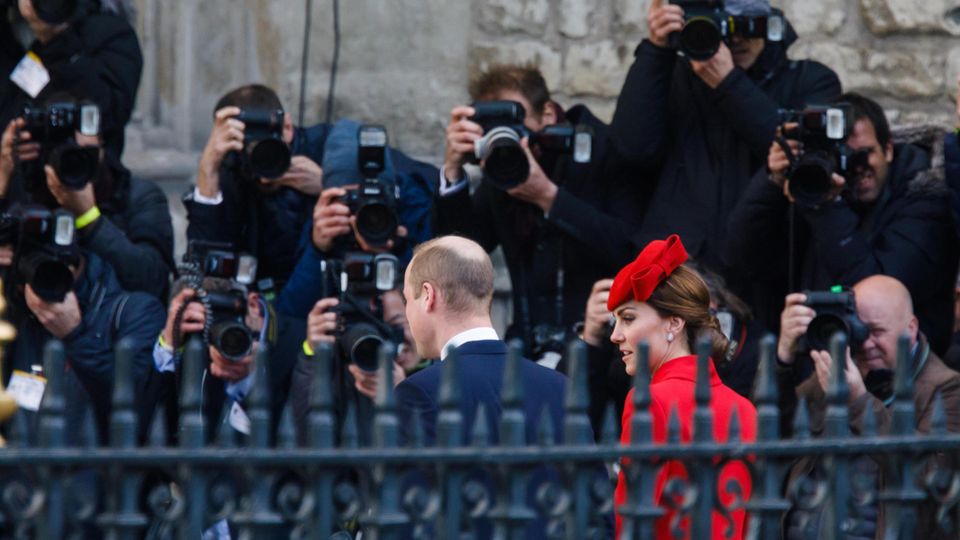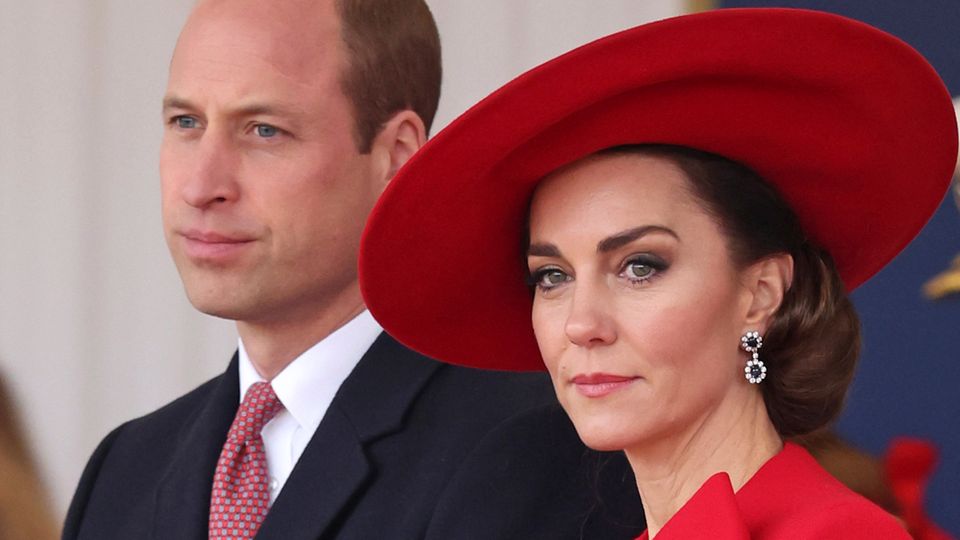Charles and Kate’s cancer diagnoses
Royal family without a king and crown princess – can that work?
Members of the Windsors, including Princess Kate (2nd from right) and Prince William (r.) on the balcony of Buckingham Palace on the occasion of Charles’ coronation in May 2023
After Kate made her diagnosis public, it is clear: she and King Charles, two of the most important royals, suffer from cancer. Can the House of Windsor compensate for the loss?
When the late Queen gave a speech at the end of 1992 on the occasion of her 40th anniversary on the throne, she coined the now famous term “Annus horribilis”, which the past few months had developed into for her family. She was referring to a series of strokes of fate that had struck the Windsors that year.
This included the failure of three of her four marriages Children – Princess Anne, Prince Andrew, as well as the separation of Charles and Diana after the publication of a scandalous book. And on top of all that, there was also the emotional and financial need to cope emotionally and financially with the major fire caused by an accident on the Windsor lap, which had destroyed parts of the state rooms at the family’s ancestral home.
The real annus horribilis of the Windsors
For a long time it was thought that things couldn’t be worse for the British royal family than they were back then. But after the Princess of Wales made her cancer diagnosis public in a moving video statement last night, just two months after the world received equally shocking news from her father-in-law King Charles, we are now looking forward to 2024 after barely three months to be seen as the actual annus horribilis of the British royal family.
Because what could be worse than a future queen, only 42 years old and apparently happily married, receiving such shocking news in the prime of her years, having to explain it to her three small children, and then suddenly losing her entire life – private and… public – to be put on hold for months.
First Catherine had to recover from a serious abdominal operation that had been scheduled at short notice, only to suddenly find out that she was suffering from life-threatening cancer. Your chances of recovery are said to be very good, but there is always a residual risk with cancer. She and her family will probably have to live with this sword of Damocles for a long time even after recovery. And some in Great Britain will certainly be asking themselves, anxiously and secretly, whether the extremely popular Kate will really one day become Queen at William’s side, or whether another stroke of fate could prevent that.
Meanwhile, the king has been battling his own illness since the beginning of February. Parallel to the ongoing chemotherapy and immune therapy, Charles attends as many appointments as possible, attends audiences and, as we hear, continues to process the government papers in the red leather boxes every day. But barely a year after his coronation in May last year, the new monarch can only operate at half strength. As much as he tries to signal to the outside world that he is continuing to carry out his royal duties, he will probably not have enough strength to take on new projects and leave his mark on his reign as he intended.
Meanwhile, the few remaining members of the dynasty, which is now no longer just slim but rather emaciated, are trying to keep the Windsor company running. The 76-year-old Queen Camilla represents her husband so comprehensively and successfully that one would not have thought possible just a short time ago.
Prince William is clearly torn between his duties as husband and father of the three young Wales children and his duties as heir to the throne and representative of his father. And important players in the family such as Princess Anne and Charles’ youngest brother Edward and his wife Sophie are also attending more appointments and spreading confidence to the outside world. Even distant royal cousins such as the Dukes of Gloucester and Kent are being called upon to avoid having to cancel too many long-planned representative appointments.
But above all there is the anxious question: What will become of the monarchy if in the end neither the King nor the Princess of Wales recover from their illnesses in the long term? If the two royal representatives with the greatest charisma in the royal family were to be permanently absent, the Prince of Wales would remain as Crown Prince Regent – can William do all that?
The family has to stick together
And this at a time when Great Britain could soon face a change of government in an uncertain political situation. Once again. Throughout her long life, Elizabeth II has always managed to act as a symbol of cohesion and hope for the British, beyond all the political upheavals. Prince William, as temporary regent, will probably find it difficult to fully fulfill this central role of the monarchy. The country’s first family seems too attacked at this moment.
The succession to the throne is in principle secured by the Prince of Wales and his three children, but they are still too young to serve the monarchy. Now it is important that the remaining active royals around William stand together and show strength, confidence and commitment to overcome this crisis in the monarchy.
If the family wants to survive the blows of fate, they have to do what they were not always known for in the past: show unity.




